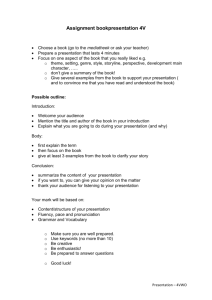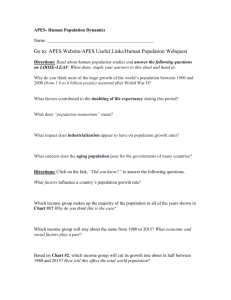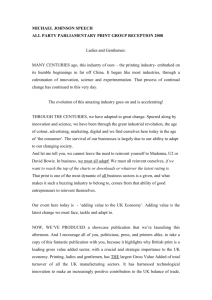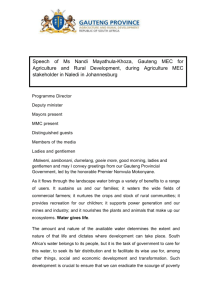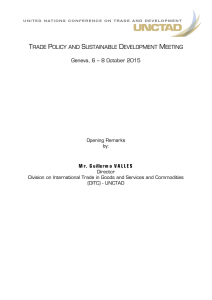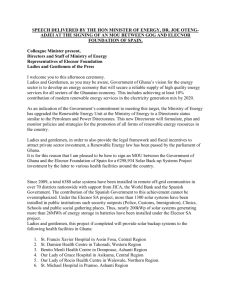UNEP - European Commission
advertisement
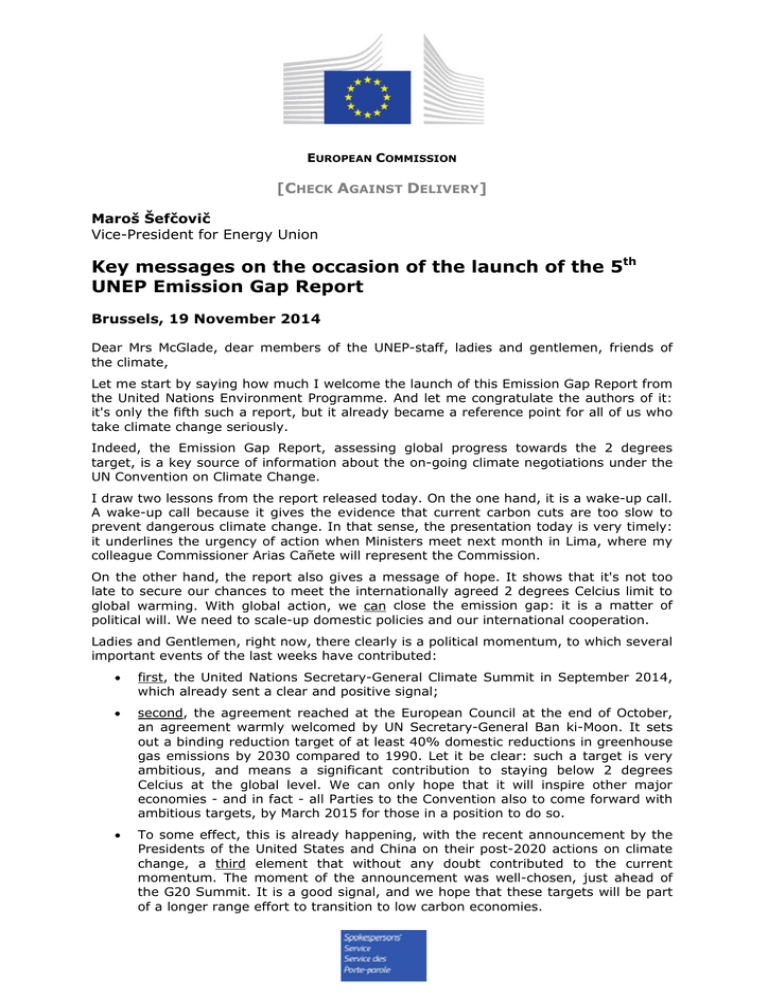
EUROPEAN COMMISSION [CHECK AGAINST DELIVERY] Maroš Šefčovič Vice-President for Energy Union Key messages on the occasion of the launch of the 5th UNEP Emission Gap Report Brussels, 19 November 2014 Dear Mrs McGlade, dear members of the UNEP-staff, ladies and gentlemen, friends of the climate, Let me start by saying how much I welcome the launch of this Emission Gap Report from the United Nations Environment Programme. And let me congratulate the authors of it: it's only the fifth such a report, but it already became a reference point for all of us who take climate change seriously. Indeed, the Emission Gap Report, assessing global progress towards the 2 degrees target, is a key source of information about the on-going climate negotiations under the UN Convention on Climate Change. I draw two lessons from the report released today. On the one hand, it is a wake-up call. A wake-up call because it gives the evidence that current carbon cuts are too slow to prevent dangerous climate change. In that sense, the presentation today is very timely: it underlines the urgency of action when Ministers meet next month in Lima, where my colleague Commissioner Arias Cañete will represent the Commission. On the other hand, the report also gives a message of hope. It shows that it's not too late to secure our chances to meet the internationally agreed 2 degrees Celcius limit to global warming. With global action, we can close the emission gap: it is a matter of political will. We need to scale-up domestic policies and our international cooperation. Ladies and Gentlemen, right now, there clearly is a political momentum, to which several important events of the last weeks have contributed: • first, the United Nations Secretary-General Climate Summit in September 2014, which already sent a clear and positive signal; • second, the agreement reached at the European Council at the end of October, an agreement warmly welcomed by UN Secretary-General Ban ki-Moon. It sets out a binding reduction target of at least 40% domestic reductions in greenhouse gas emissions by 2030 compared to 1990. Let it be clear: such a target is very ambitious, and means a significant contribution to staying below 2 degrees Celcius at the global level. We can only hope that it will inspire other major economies - and in fact - all Parties to the Convention also to come forward with ambitious targets, by March 2015 for those in a position to do so. • To some effect, this is already happening, with the recent announcement by the Presidents of the United States and China on their post-2020 actions on climate change, a third element that without any doubt contributed to the current momentum. The moment of the announcement was well-chosen, just ahead of the G20 Summit. It is a good signal, and we hope that these targets will be part of a longer range effort to transition to low carbon economies. I fully agree with what the US Climate Envoy Todd Stern, who I met the day before yesterday, just said: 'We have to seize the momentum'. The climate conference in Lima should therefore be another key step to building the momentum needed to achieve an agreement in Paris. An agreement that sends a strong signal that the world is committed to a path towards low carbon climate resilient economies. In particular, Lima must ensure that: • the greenhouse gas reduction contributions that countries come forward with in 2015 are transparent and comparable; • that there is an international process before the Paris conference in 2015 to consider and analyse the countries' contributions; • and that work to enhance mitigation ambition before 2020 continues, under the UN Convention on Climate Change, and other relevant fora such as the Montreal Protocol, mobilising parties and other stakeholders: cities, citizens, companies. Ladies and gentlemen, I could comment at length on the information included in the UNEP-report. Information we badly need if we want to assess how our collective efforts align with the requirements of science and the 2 degrees Celcius goal. But let me, to conclude, just pick out one more element that in particular caught my attention, especially as Vice-President in charge of Energy Union: energy efficiency. The report shows that there is a vast potential to improve energy efficiency across many sectors. It also shows the multiple benefits – social, economic, environmental. That's why I included energy efficiency – next to the decarbonisation of the economy – as one of the five pillars on which to build a European Energy Union. An Energy Union that should help to realize an ambition that all of us in this room share: to close the 'Emissions Gap'. I thank you for your attention. 2

